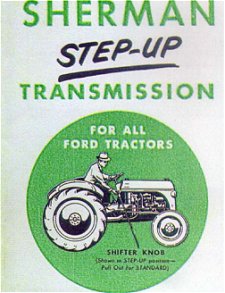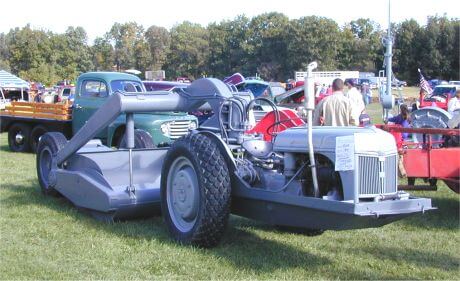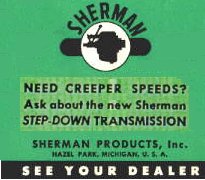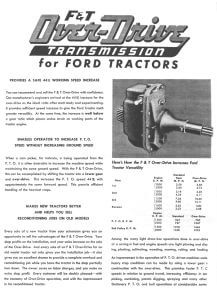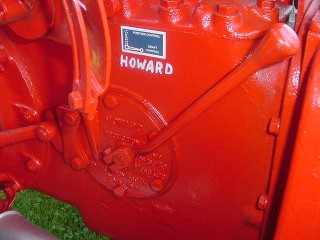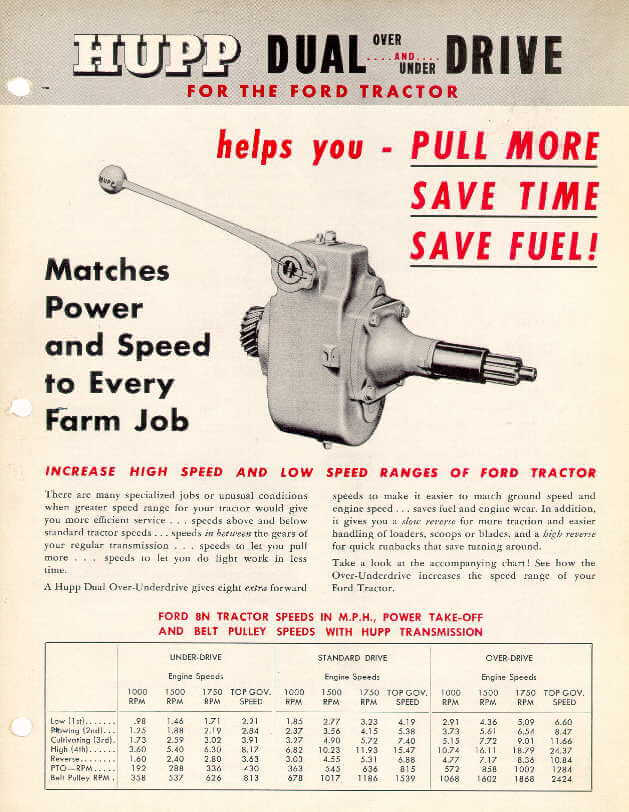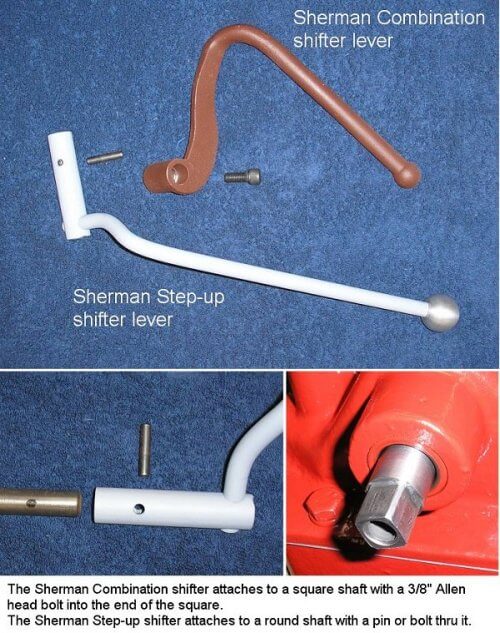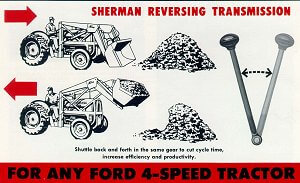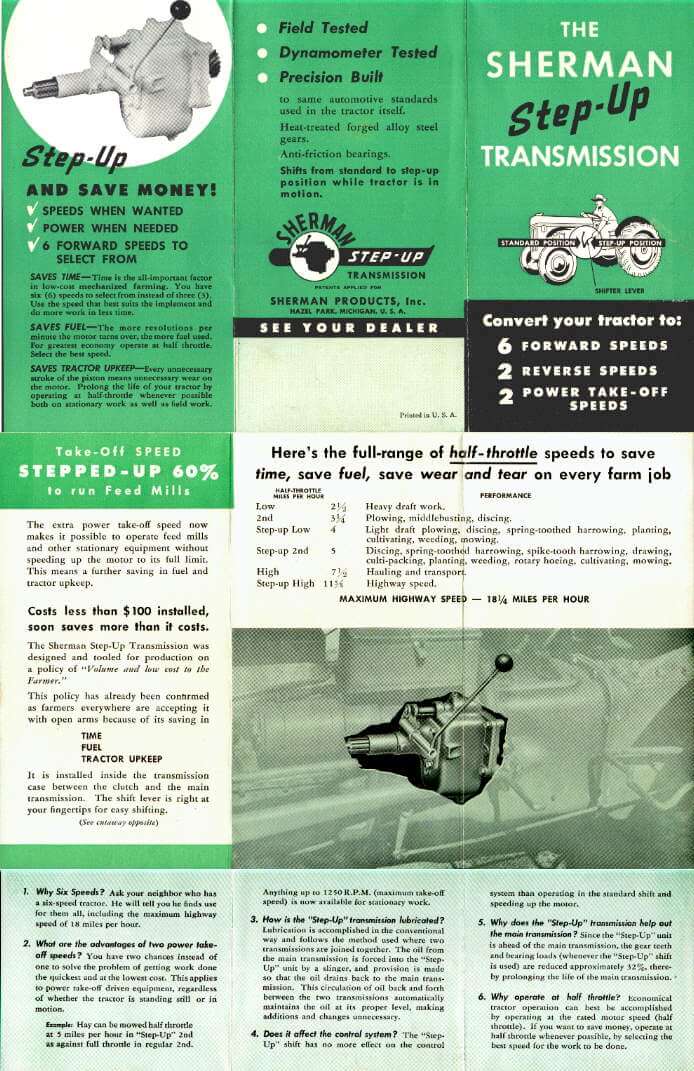Sherman Transmissions
Other Auxiliary Transmissions
By: John Smith of Old Ford Tractors
Looking For Something?
Cable Shifter
Some Step-up units were sold that used a cable to shift the transmission rather than the usual lever on the left side.
Combination Transmission
The Sherman step-up/step-down combination transmission is, by far, the most popular and most useful transmission back then and still today.
Creeper Transmission
Following the popularity of the Step-up/Step-down Combination transmission was the Sherman “special purpose” or “creeper” single Step-down transmission.
Everett Transmission
For some applications such as trenching or running a rototiller, a lower ground speed was needed while still maintaining the higher pto speed. To accomplish this, some transmissions were made to install behind the tractor transmission rather than in front like the Sherman and Hupp.
F&T Overdrive
One of the more rare auxiliary transmissions is the F&T overdrive unit from the mid ’40s.
Howard Gear Unit
The Howard gear reduction unit mounts to the back of the regular transmission housing and has a shift lever on the side cover where the dipstick was located.
Other Manufacturers
In the later ’50s Sherman offered the shuttle or reverser transmission that simply reversed the input to the regular transmission and gave you all the normal forward speeds when you were going backwards.
Sherman Products
Many companies started making products to “improve” the Ford’s usefulness or make their operators more comfortable. But one stood out just by the sheer number of “goodies” they sold and that was Sherman Products.
Sherman Step-Down
The Sherman Step-Down transmission worked the same as the Step-up except it lowered the gear ratios rather than raised them to give the tractor a slower ground speed.
Shuttle Transmission
In the later ’50s Sherman offered the shuttle or reverser transmission that simply reversed the input to the regular transmission and gave you all the normal forward speeds when you were going backwards.
Cable Shifter
Some Step-up units were sold that used a cable to shift the transmission rather than the usual lever on the left side.
Combination Transmission
The Sherman step-up/step-down combination transmission is, by far, the most popular and most useful transmission back then and still today.
Creeper Transmission
Following the popularity of the Step-up/Step-down Combination transmission was the Sherman “special purpose” or “creeper” single Step-down transmission.
Everett Transmission
For some applications such as trenching or running a rototiller, a lower ground speed was needed while still maintaining the higher pto speed. To accomplish this, some transmissions were made to install behind the tractor transmission rather than in front like the Sherman and Hupp.
F&T Overdrive
One of the more rare auxiliary transmissions is the F&T overdrive unit from the mid ’40s.
Howard Gear Unit
The Howard gear reduction unit mounts to the back of the regular transmission housing and has a shift lever on the side cover where the dipstick was located.
Other Manufacturers
In the later ’50s Sherman offered the shuttle or reverser transmission that simply reversed the input to the regular transmission and gave you all the normal forward speeds when you were going backwards.
Sherman Products
Many companies started making products to “improve” the Ford’s usefulness or make their operators more comfortable. But one stood out just by the sheer number of “goodies” they sold and that was Sherman Products.
Sherman Step-Down
The Sherman Step-Down transmission worked the same as the Step-up except it lowered the gear ratios rather than raised them to give the tractor a slower ground speed.
Shuttle Transmission
In the later ’50s Sherman offered the shuttle or reverser transmission that simply reversed the input to the regular transmission and gave you all the normal forward speeds when you were going backwards.
Thanks to John Smith of Old Ford Tractor for allowing us to use this information.


